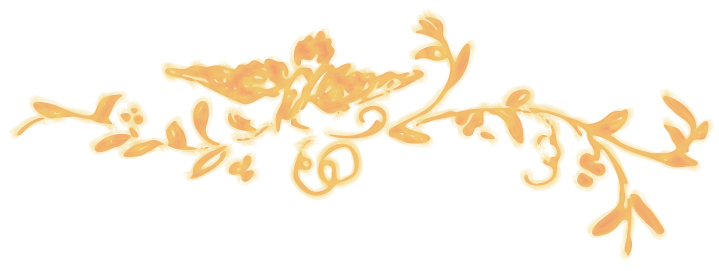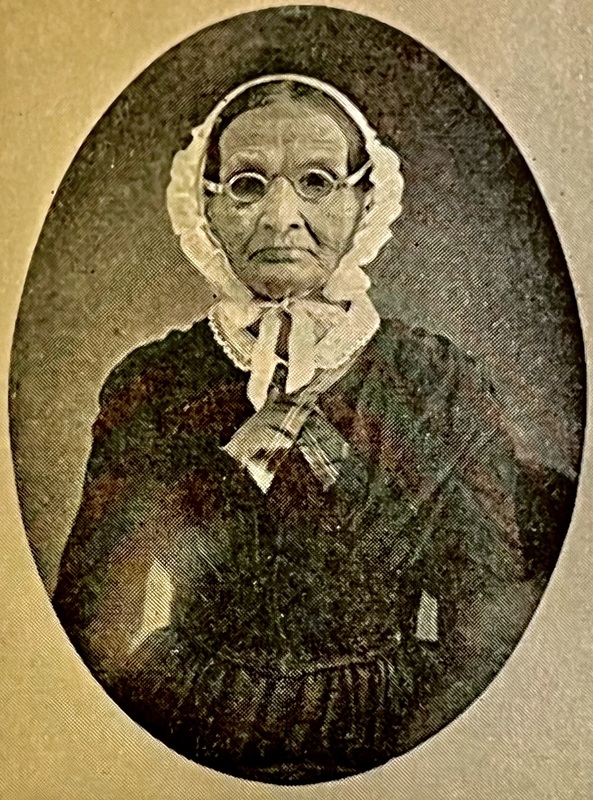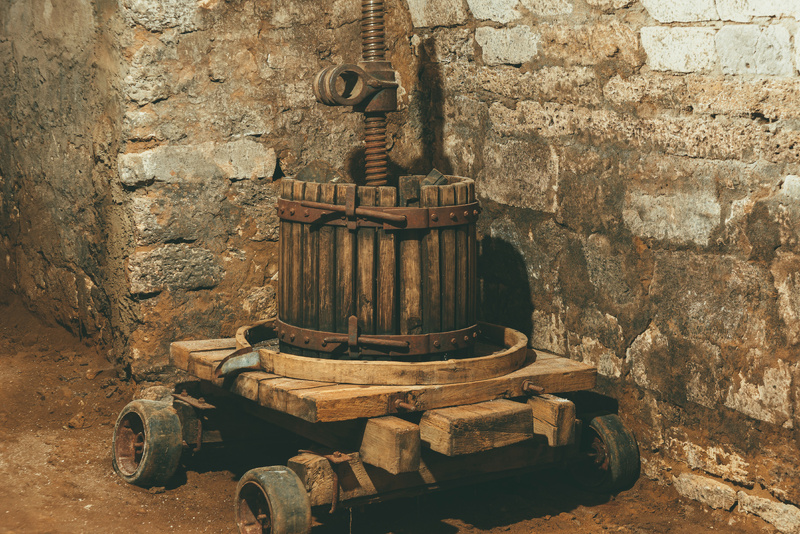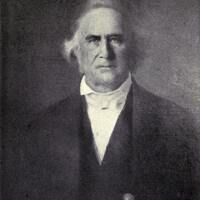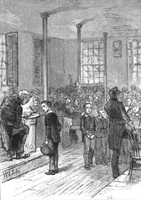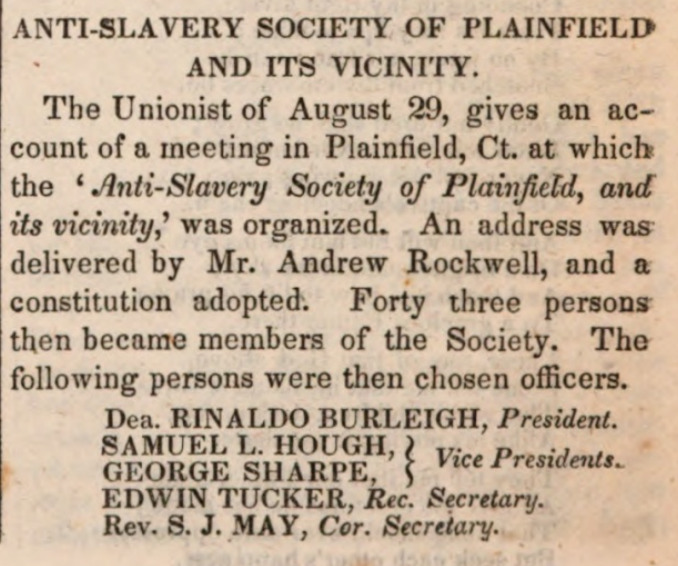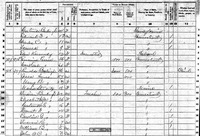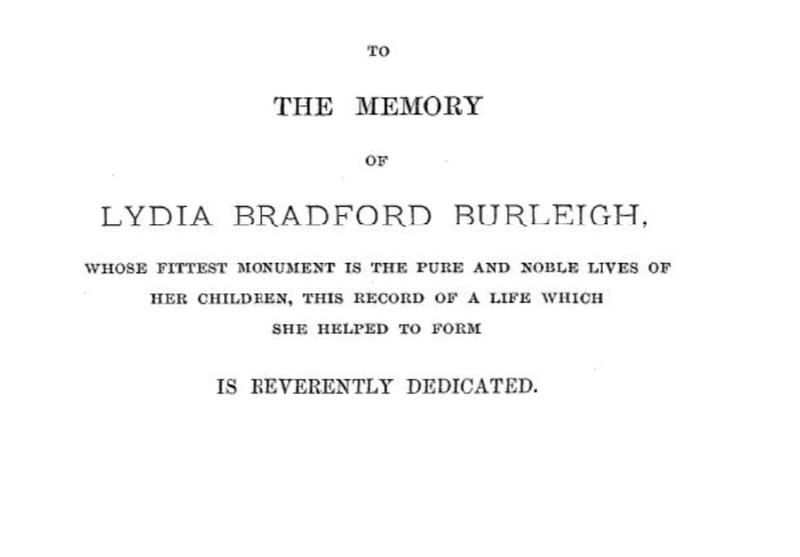The Parents: Rinaldo & Lydia Bradford Burleigh
Rinaldo Burleigh Basics
b. February 20, 1774, North Ashford, Connecticut
d. February 10, 1863, Plainfield, Connecticut
m. September 15, 1805, Canterbury, Connecticut
lived in Connecticut his entire life
Lydia Bradford Burleigh Basics
b. April 9, 1779, Canterbury, Connecticut
d. February 25, 1853, Plainfield, Connecticut
m. September 15, 1805, Canterbury, Connecticut
lived in Connecticut her entire life
Heads of the Household
Rinaldo Burleigh and Lydia Bradford Burleigh enjoyed a long marriage, and raised seven extraordinary children. But our knowledge of them is wispy and partial, with gaps of many years. The threads of evidence suggest that their children found a strong contrast between the two: they respected their father, and loved their mother. In the letters I have been able to peruse so far, they refer to their father without a hint of jocularity, but Mother with the full range of maternal affections - from "have Mom send me my clothing please" to "I miss/love Mom so much."
Federal census records in 1830 reveal an interesting fact: the Burleigh family had a resident woman household helper/servant who was African-American. The census of that year followed the protocol of only listing the head-of-household by name, so this woman's personal identity is not yet clear. She was listed in the age range of 10-24, and was a free woman. This is intriguing from many angles - was this an exploitative relationship? A friendly one? Did her presence in the household help to radicalize the core generation of siblings? Could this woman have become a student at the Canterbury Female Academy? Until there is more information, or references to her by the siblings in journals or letters, all questions must remain speculative.
I. Rinaldo Burleigh's Life: Early Losses
Rinaldo Burleigh is best-known as a principal (also known as a "preceptor") of three prestigious academies in Connecticut: the Woodstock Academy; Colchester's Bacon Academy; and most significantly the Plainfield Academy, with which he was associated for the longest period of time.
However, it was not clear that he was destined for prestige. He suffered two tragedies in early life - the loss of his father when Rinaldo was but 10 years of age, and then a few years later, an accident while using a cider-mill, which caused him to lose much of his left arm when he was a teenager. The result was a deep commitment to earning his own living through mental labor.
References
Hebbard, J.C. "Contemporary Reformers: Prudence Crandall's Immediate Co-Workers," Topeka Capitol April 13, 1886.
Larned, Ellen D. History of Windham County, Connecticut, v. 2, 1760-1880. Worcester, Massachusetts: Charles Hamilton, 1880. p. 253
II. John Adams, Educator and Mentor to Rinaldo Burleigh
Rinaldo was fortunate to be able to study with a man who became his mentor, John Adams (1772-1863). Adams was born in Canterbury to parents who were patriots (his father having fought in the American Revolution), but lacking in higher formal education. The family scraped some money together to send their John Adams to Yale, where he attended starting in 1791, until graduating in 1795. Upon returning to Canterbury, he remained in the vicinity to provide elder care for his mother. Therefore, starting in 1795, Adams ran a select academy on the Green in Canterbury - likely quite close to where Prudence Crandall's Academy would be some three+ decades later (Brown and Brown, The Story of John Adams, 18-23).
Ellen Larned sings Adams' praises in her description:
“Mr. Adams had in large measure the true teacher’s art of calling out the best that was in his pupils and awakening their enthusiasm for school, studies, and master. Combining sympathy and kindness with authority he won their most affectionate regard. He was especially noted for his kindness to indigent young men seeking education. Among those thus aided and encouraged was Rinaldo Burleigh" who persevered in the "face of great poverty and hardship...to fit himself for intellectual employment. Mr. Adams took him not only into his school but into his “very heart,” enabling him to meet his expenses by assisting in teaching till he was qualified to enter college.” (Larned, 253)
Adams likely recognized a similarity between his own situation as an impoverished young student, and that of the young Rinaldo Burleigh. Thus began what would become a most important relationship for both of them. As Larned refers to above, Adams was happy to employ Burleigh as a kind of co-apprentice teacher in Canterbury. He also must have recommended him to college, because Rinaldo Burleigh also attended Yale University, graduating in 1803. As soon as his college diploma was awarded, Burleigh took over for his mentor John Adams, but this time as the Preceptor of the prestigious Plainfield Academy. This location and school would shape the lives of the Burleighs in the nineteenth-century.
Rinaldo Burleigh was fortunate in his mentor. John Adams went on to great fame as an educator, leading Plainfield Academy (1801-1803), Bacon Academy in Colchester (1803-1810), Philips Academy in Andover, Massachusetts (1810-1833), and Monroe Academy in Elbridge, New York (1833-1835), before moving west to Jacksonville, Illinois where he led the Jacksonville Female Academy (1836-1843) next door to Illinois College. Jacksonville was a center of Abolitionist activity in Illinois, and his presence there indicates that Adams had at least nominal sympathy with the anti-slavery movement. The depth of his commitment to Abolition awaits further research. His most noted contribution to the Benevolent Empire was in endorsing Sunday Schools.
The Jacksonville Female Academy was vastly different from Adams' earlier work at largely male institutions. His daughter Emily co-taught with him in Jacksonville. Here are her reflections on her father's approach to the female students of the Midwest:
"Girls direct from the timber and the creeks, as wild as the dumb creatures who had their homes in these haunts, crowded about him. Their manners were uncouth, their language barbarous. It was a question whether the venerable pedagogue from Boston could understand such material or make anything from it....His policy in dealing with these wild girls was first of all to win their hearts, then he could mould them to any form he pleased. Love was the power by which he subdued them. This was his only threat, his only penalty. He had no occasion to call in parents or trustees to enforce his authority. Often the wrongdoer was melted by his tender manner and tearful eye, and would throw her arms about his neck in token of unqualified submission. His will was like iron, but his heart had grown soft as that of a little child. His law was like that of the Medes and Persians ; but it was law in the hands of a mediator." (Brown and Brown, The Story of John Adams, 224-225)
However, there is a major dissenting voice in the midst of the universal acclaim for John Adams. Oliver Wendell Holmes, Sr. was a student for one year at Phillips Academy, and found the Preceptor to be a rather stern character. His famous extended poem, "The School-Boy," features Adams in a somewhat unflattering stanza, which is then illustrated as shown below.
Grave is the Master's look; his forehead wears
Thick rows of wrinkles, prints of worrying cares;
Uneasy lies the heads of all that rule,
His most of all whose kingdom is a school.
Supreme he sits; before the awful frown
That bends his brows the boldest eye goes down;
Not more submissive Israel heard and saw
At Sinai's feet the Giver of the Law.
Another of the preceptors who preceded Burleigh was Eliphalet Nott, a noted educator who served as president of Union College in Schenectady for many years. While at Plainfield, Nott did his best to elimate corporal punishment and whipping of students. He wrote movingly about how, as a youngster, he decided to change the cruel regime of physical violence visited upon school children
Being of a contemplative and forbearing disposition, this discipline of the rod became peculiarly irksome to me, and, as I thought, unjustifiable; and I formed a resolution, if I lived to be a man, I would not be like other men in regard to their treatment of children.
Nott's success at a district school, where he instituted the no corporal punishment idea, led to his appointment at Plainfield, where he instituted the same policies. Rinaldo Burleigh did not follow this noble precedent, though his children in their own teaching (and all of the core siblings did some teaching except for George) eschewed the whip (though they tend to credit this to their pacifist and non-resistant ethics rather than imputing it to their father).
The evidence that Rinaldo Burleigh used corporal punishment at Plainfield Academy stems from an anecdote including in William Kinne's synopsis of the early Preceptors of the Colchester Academy. He had a pupil from Boston whose lessons were neither prompt nor up to the level:
Mr. B's sole remedy for this was the hickory which he applied unsparingly. One day he was whipping the Boston lad -- too severely as [another student, Mr.] Ensworth thought, who therefore ventured to speak and remonstrate with Mr. B., but only to the effect of bringing the hickory upon his own shoulders. Ensworth appeared at the Academy no more.
The Ensworth in question was likely Nehemiah Ensworth (1779-1861). He played a minor role among the opponents of Prudence Crandall and the Canterbury Female Academy, because his daughters had been enrolled in the first version of the Academy.
The other noted predecessor was Zachariah Eddy, who went on to a storied legal career in the Plymouth area of Massachusetts, where he also taught law to a young Charles Calistus Burleigh.
References
Brown, Mary Elizabeth and Helen Gilman Brown, The Story of John Adams, A New England Schoolmaster. New York: Charles Scribners Sons, 1900.
Gertrude Kimber Burleigh, letter to Samuel May Jr., November 14, 1857 - online from the Boston Public Library Abolitionist collections
Holmes, Oliver Wendell. The School Boy. Boston: Houghton, Osgood, and Company, 1879. [excerpt p. 41]
Kinne, William, Records of Mr. William Kinne Pertaining to Bacon Academy, "Preceptors" - Manuscript held by Colchester Historical Society.
Nott, Eliphalet. "Letter from Rev. Eliphalet Nott, D.D., Dated Jan. 1861." The American Journal of Education, Vol XIII, New Series. Vol. III, 1863, p. 132-134.
Find a Grave, database and images (https://www.findagrave.com/memorial/29512989/nehemiah-ensworth: accessed June 19, 2024), memorial page for Nehemiah Ensworth (30 Jun 1779–12 Jun 1861), Find a Grave Memorial ID 29512989, citing Carey Cemetery, Canterbury, Windham County, Connecticut, USA; Maintained by James Bianco (contributor 47745493).
III. Rinaldo Burleigh's Professional Life
Rinaldo Burleigh attended Yale (where he was in class with America's evil genius John C. Calhoun!), graduating in 1803. The best reconstruction of his career as a teacher and preceptor that can be deduced from the evidence currently available would break down thus:
Plainfield Academy - 1803-1810
Woodstock Academy - 1811-1812
Colchester Academy - 1813-1815
Plainfield Academy - 1816-early 1830s (documentation not yet clear)
Rinaldo Burleigh became a highly successful pedagogue. He oversaw the Plainfield Academy when it was at its strongest, with robust enrollments and an enviable reputation as a feeder school to Yale. His fiscal discipline resulted in a healthy financial situation for the Academy. This brought him to the attention of a new local Academy in Woodstock, Connecticut. Rinaldo had some family in the area, too, making this a relatively comfortable move for his growing brood of baby Burleighs. We can date the outline of his time in Woodstock by the births of two of his children there - William in 1812, and the short-lived infant Lydia Ann in 1814. There is also supporting evidence of his success at the Woodstock Academy from the county historian Ellen Larned and town historian Clarence Bowen. His leadership there "was efficient and profitable, bringing the institution to the culmination of its early prosperity" (Larned 373); this corroborated the story Bowen tells of the town voting bonds to the Academy when Burleigh first took over, and then "five years later the bonds were returned" - a fact rare enough to be remarkable, apparently (p. 378).
In addition to his effective leadership over the Plainfield and Woodstock Academies, he once again followed his mentor, John Adams, in becoming a preceptor at Colchester Academy (now known as the Bacon Academy). This links Rinaldo Burleigh to one of the more famous instances of higher education for African-Americans available in Connecticut prior to Canterbury - albeit in a segregated separate building.
For all of the accolades that follow Rinaldo's name as a strong teacher and capable administrator, there is little in the way of warmth that emerges in descriptions of him, especially compared to some of the other figures already mentioned, such as John Adams and Eliphalet Nott.
But Rinaldo Burleigh's position as a deacon of the Congregational Church, and as a leader of the school, definitely provided him with social capital, and, to his credit, he used that during the crisis of the Canterbury Academy.
The Anti-Slavery Society of Plainfield was formed in the immediate aftermath of the first trial of Prudence Crandall for her violations of Connecticut's Black Law, in August of 1833. Rinaldo Burleigh proudly took the role of President, and did so with his title as Deacon before his name. He understood the storehouse of good will he had accumulated as a force he could leverage in making change. This is anti-racist politics in action: by lending his prestigious name to the Anti-Slavery Society of Plainfield when it was forming, in the midst of the Canterbury Academy scandal, he potentially influenced the many former students and colleagues he had around the county, state and region. His voice speaking for the Abolitionist cause may have muted the criticism of anti-slavery politics that had so poisoned the waters of Canterbury, too.
References
"Anti-Slavery Society of Plainfield and Its Vicinity," The Abolitionist 1:10:159 (October 1833)
Bowen, Clarence Winthop, The History of Woodstock, Connecticut. Vol. 1. Norwood, Massachusetts: The Plimpton Press, 1926. p. 378; see also p. 460.
Larned, Ellen D. History of Windham County, Connecticut, v. 2, 1760-1880. Worcester, Massachusetts: Charles Hamilton, 1880. p. 253.
IV. Rinaldo Burleigh's Long Retirement
While there are conflicting dates, it is clear that Rinaldo Burleigh's tenure as preceptor at Plainfield Academy was winding down in the 1830s. In addition to his pre-existing arm amputation, he had a steady deterioriation in his eyes. Sources refer to his returning to farming - but his disabilities meant that he would need one or more of his children to assist him. John, Charles and William were already making their way in the world, so not surprisingly the farming fell to Lucian and George (Cyrus escaped farming by becoming a temperance agent), and the elder care to Mary.
By 1846 he was completely blind, a fact confirmed in the census records for 1850 and 1860. One of Lucian's grandchildren, Gertrude Elizabeth Burleigh (b. 1844) remembered reading aloud to her grandfather when he could no longer see. It is significant that Mary Burleigh, the eldest child, and her husband Jesse Ames, left Plainfield within months of Rinaldo's death - their lives, one surmises, were "put on hold" as long as Rinaldo needed to be nursed. Census records show that the children were dutiful - Mary, later joined by her husband, lived with Rinaldo. Lucian and his family lived next door. George was nearby in the 1840s and early 1850s, but his wife's family connections in Rhode Island drew them away from Plainfield to the town with which George, Ruth and Sydney are most strongly associated, Little Compton, Rhode Island. Charles, despite his prominence in the movement nationally, filled the gap left by George's departure when he moved back to Plainfield with his entire family, as evidenced in the 1860 census.
V. Lydia Bradford Burleigh
The affection with which Lydia Bradford Burleigh was held by her children and by the larger Abolitionist network seeps through in letters, memories, and the obituary in The Liberator. One example involves a sweet insight into both Lydia's thoughtfulness and Lucretia Mott's appreciativeness. It comes from a letter Charles sent to his brother George in February of 1840:
"I must crowd in a few words here to tell Mother that last evening when I made my usual call at 136, Mother Mott showed me a beginning of a stocking she is knitting, of that yarn I brought, & about how beautiful, & uncommonly even & nice it is, & what very handsome work it will make. She seemed much pleased with it, not only for its own sake, but for the source from which she received it."
Reference
Charles C. Burleigh, letter sent to George Shepard Burleigh, February 14, 1840, in George S. Burleigh collection, John Hay Library, Brown University, Providence, Rhode Island. Catalog # HA 1217.
VI. Sentiments of Lydia's Children
Discovery of letters among the core generation of siblings have been among the most exciting aspects of this project, and let us hope there are more awaiting intrepid researchers! While these adult children rarely mention their father (other than in money matters), their mother comes up in all sorts of contexts. In her thesis on George Shepard Burleigh, Spies asserts that he "adored...his mother and sister" while "his father he admired." This may have been felt by the siblings generally, as can be seen in the sample below:
I intended long before this to write to Mother. All her letters have been duly received. Harriet would write to her – but she is not yet well enough. We have had a great deal of sickness and suffering in our little family during the past year....We hope to visit Connecticut next summer....Little Hatty is very anxious to see her grandmother (William writing to George in November/December of 1841)
In an appendix to a letter that Cyrus wrote in June 1843, another brother - and I am assuming it is Charles Calistus Burleigh — wrote this interesting (and dated) love message to his mother:
I am not now & do not know that I ever shall be worth enough to get a portrait of thee, but one thing I know, thou art daguerrotyped on my soul.
During a protracted stay in Providence, Rhode Island engaged in Reform causes, Cyrus voices that persistent request from sons to mothers - help with raiment!
Tell Mother that I want my flannel shirts, sent down here.
References
Burleigh, Cyrus Moses, and Charles Calistus Burleigh (?) to George Shepard Burleigh (and Lydia Bradford Burleigh), June 1, 1843, in George S. Burleigh collection, John Hay Library, Brown University, Providence, Rhode Island. Catalog #HA 1240.
Burleigh, Cyrus Moses, letter to George Shepard Burleigh, October 31st 1843, in George S. Burleigh collection, John Hay Library, Brown University, Providence, Rhode Island. Catalog #needs to be found
Burleigh, William Henry, letter to George Shepard Burleigh, late November or early December 1841, in George S. Burleigh collection, John Hay Library, Brown University, Providence, Rhode Island. Catalog #HA1246
Spies, Minnie Lee, George Shepard Burleigh. Masters’ Thesis, Department of English, Brown University, 1934, p. 7.
VII. A Meaningful Obituary
The Abolitionist movement really was a lattice-work of connections between people and towns. Increasing circulation for Abolitionist newspapers or helping to arrange talks for traveling anti-slavery agents required that local knowledge feed into regional and national networks. The Burleigh family exemplifies this. Some of the brothers - most notably Charles, William and Cyrus - move into the full extent of the geography of the day, with excursions to Ohio, Pittsburgh, Buffalo, Vermont, New York, Philadelphia, and Boston. Others stay in the vicinity of Plainfield and Windham county, Connecticut, and thus their homes become way-stations for weary Abolitionists. In the Burleigh family, the mother/matriarch Lydia Bradford Burleigh apparently exemplified this sort of hospitality, as well as a deep commitment to equal rights for all. It is not every mother of a leading anti-slavery activist who received a half-column obituary in The Liberator. But Lydia Bradford Burleigh most certainly did. Every line of the text reveals much about her. After the death announcement itself, the first paragraph is written by William Lloyd Garrison; the second paragraph is an extract from a letter written by her son Charles Calistus Burleigh.
DIED—In Plainfield, Ct., on the 25th ult., Lydia Burleigh, wife of Rinaldo Burleigh, aged 73 years 9 ½ months.
☞ It is fitting that the above notice should appear in THE LIBERATOR; for the slave had no truer friend than she; and that Christianity which puts the life before the creed, and seeks to honor the Father by doing good to his children, especially his poorest, neediest children, no sincerer votary; and one more true and faithful in the discharge of the duties of a wife and mother, it would not be easy to find.
☞ This venerable woman was the mother of CHAS. C. BURLEIGH, who, in a private letter to us, says— ‘I reached home too late to see my mother alive, but not too late to follow her cold remains to their narrow resting-place. She had gone, even before the news of her illness reached me. Six days ago she was, to all appearance, in her usual, pretty good health, busy with her usual domestic duties. Five days ago, she was at rest. Yesterday we looked our last upon her still life-life features; and now, if her spirit could speak to me from its new abode, it would say to me, ‘Return to your work, and show your reverence for my memory by being true to the principles I instilled into you from infancy upward.’ I purpose to obey, if He will give me strength, who has called her home.’
Following the death notice, the first paragraph was almost certainly written by Wlliam Lloyd Garrison himself. Notice his emphasis on a Christianity of the spirit over the letter, that "which puts the life before the creed." The final paragraph by Charles C. Burleigh confirms that Lydia Bradford Burleigh was an ongoing inspiration to her children, in the literal sense of putting the spirit of reform in them! "Show your reverence for my memory by being true to the principles I instilled into you from infancy upward" affirms the sentiment in the dedication of the second edition of William Burleigh's Poems. Because he died before this edition was published, it is unclear if the dedication was his, or from the daughter-in-law that Lydia never met, Celia Tibbits, though the latter seems likely.
References
The Liberator February 4, 1853 23.5.19
Burleigh, William Henry, and Celia Burleigh. Poems by William H. Burleigh. With a Sketch of his Life by Celia Burleigh. New York: Hurd and Houghton, 1871.
